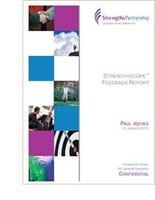Strengthscope Article: Where Can I Use Strengths Assessments?) The use of Strengths Assessments today in business:
As you can see, the practical application of strengths assessments is already broad and getting broader all the time. We hope and believe that we will continue to see better and best practice application as time goes on, and that users of strengths assessments will continue to share their learnings along the way. Author:Dr Paul Brewerton, Co-developer of Strengthscope |



